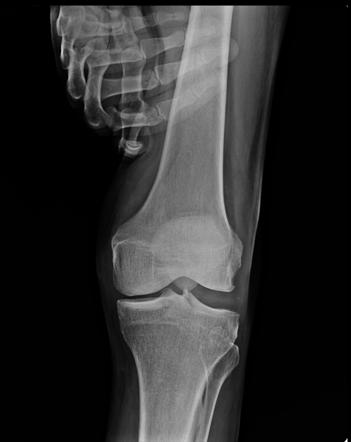Last Updated on July 31, 2019
Stress views are special x-ray views in which radiograph of the part examined is done after applying requisite stress. Stress views are important in the evaluation of ligamentous tears, joint stability, and fracture unions.
For example, stress views in the hand are usually ordered if there is an injury to the ulnar collateral ligament of the first metacarpophalangeal joint [Gamekeeper’s thumb].
Similarly, in the lower extremity, the stress views of the knee and ankle joints are frequently obtained.
How To Obtain Stress Views?
Stress views are done after applying the force and direction of the force depends on the part examined and the purpose of the x-ray.
For example, if one wants to evaluate the integrity of the lateral collateral ligament [Lateral collateral ligament connects femur bone to the tibia across the knee joint, on the lateral or outer aspect], the patient is asked to lie on his back and knees are flexed about 15° to 20°.
With the thigh fixed with one hand assistant applies pressure on the medial aspect of the leg so as to push the foot towards the other foot producing varus at the knee.
The joint space would open as shown in the image above.
The films thus obtained show the anteroposterior projection.
Evaluation of ankle ligaments also requires stress radiography.
A trained assistant who understands the forces and knows to maintain them while the x-ray is being shot is always required for stress views. With little education and training, this can be achieved easily.
One of the other situations where stress views are important is the evaluation of fracture union. Sometimes, the status of fracture union is not clear from routine xray projections.
In such cases, the forces are applied in opposite directions on either side of the fracture so as to cause a displacement. In the view taken, opening or closing of fracture is noted.
If such phenomenon is present, the fracture has not united as yet.
Image Credit
Radiopedia